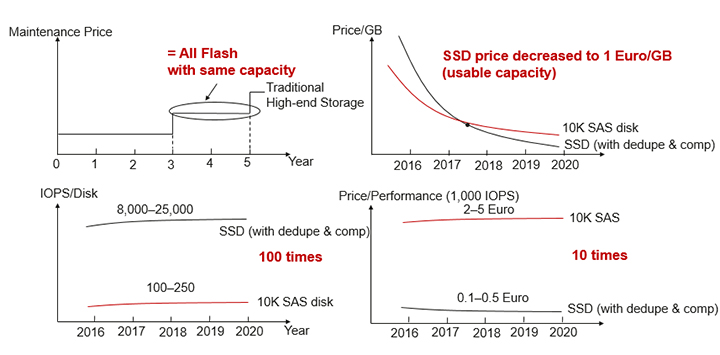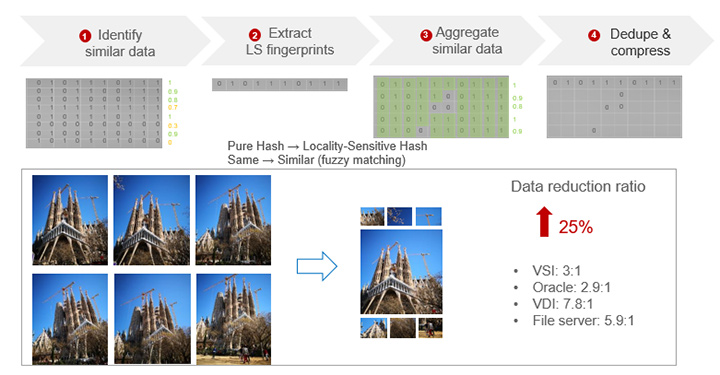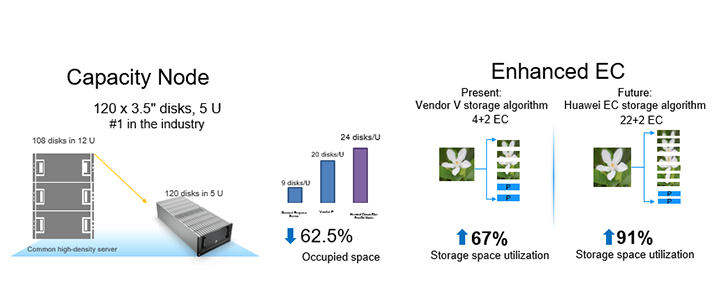Produits, solutions et services pour les entreprises
[Guizhou, China, May 26, 2022] At the China International Big Data Industry Expo under the theme of Eastern Data, Western Computing (Cross-Region Data Processing): Building a National Computing Network System, Huawei and related organizations jointly released the Research Report on Green and High-Quality Data Center Development for Carbon Peak and Carbon Neutrality (hereinafter referred to as "the Research Report").
More importantly, the Research Report focuses on the following four storage technology directions in the discussion of technical trends and solutions for promoting green data centers (DCs), specifically for the finance industry.
Flash media features high density and reliability at low latency and reduced power consumption rates. By offering equivalent capacity as HDDs, flash storage reduces power consumption by 70%, boosts performance 100-fold, and reduces footprint by 50%. All-flash is the inevitable future trend of data center storage media. The percentage of flash-based storage media in data center is gradually increasing. Enterprises that want to stay ahead are recommended to deploy 50% all-flash by 2025, 90% by 2030, before eventually running 100% all-flash data centers.

Figure 1. All-flash storage reduces carbon footprint by 50%
Typically, a general-purpose server is equipped with a limited number of hard disks. By contrast, a purpose-built high-density storage node provides 2 to 2.6 times denser hardware, with 10% to 30% lower energy consumption under equivalent capacity. For example, during big data analytics, the decoupled storage-computing architecture combines with the erasure coding (EC) technology to improve disk utilization from 33% to 91%, lowering occupied disk space and slashing energy consumption.

Figure 2. Decoupled storage-computing architecture reduces power consumption by 10% to 30%
Data dedupe and compression technologies run a series of cutting-edge algorithms to improve data storage layout and storage efficiency. These technologies are already well-known in the industry along with flash media, and are used to improve data reduction ratio to a range of 2:1 to 3.6:1 in database, desktop cloud, and virtual machine scenarios, while slashing energy consumption by at least 50%.

Figure 3. Super deduplication increases data reduction ratio by 25%
Data-intensive clustered storage refers to an integrated storage, computing, network, and energy solution that helps build medium- and large-sized green data centers. Innovative technologies such as high-density, high-ratio EC, data processing units (DPU) offloading, data processing acceleration, and storage liquid cooling are core to ensuring high delivery efficiency and fast service rollout of DCs. Furthermore, one pool connects to multiple clouds to implement unified and converged storage resource pools across data centers, improving resource utilization by 50%.

Figure 4. Data-intensive cluster storage reduces TCO by 30% to 50%
Building a green, intelligent financial DC places higher requirements on data center design, power usage effectiveness (PUE), and IT equipment. By providing a rich portfolio of industry-leading all-flash DCs and data-intensive storage, Huawei is accelerating the upgrade of the storage industry and driving the world to green, intelligent data centers.